If you leverage SEO tools for rank tracking and keyword research, you’ve automated your SEO, right?
Well, not so much.
The sites that win in the search results for the query “seo automation tools” don't deliver the automation that enterprise SEOs need to succeed in the world of search today.
Don’t blame Google's algorithms: The search engine is delivering upon searchers’ expectations of what they believe automation is. But this classification barely touches the surfaces of true AI and automation in SEO, diluting its meaning.
It’s time to re-evaluate how we think about automation in SEO.
Table of Contents:
What Is SEO Automation?
SEO automation is the process of using AI to handle repetitive tasks, allowing you to focus on strategy and drive results faster.
At its core, automation helps SEOs process massive amounts of data efficiently—turning raw information into actionable insights and accelerating execution.
Automation in SEO began with rank-tracking tools that streamlined position monitoring. But true automation goes far beyond that, revolutionizing the way you approach organic search optimizations.
More on this down below, when we discuss the three main types of automation.
Much of the seoClarity platform is built around data, AI, machine learning, and automation, creating a fundamental shift in how SEOs spend their time.
Take a look:
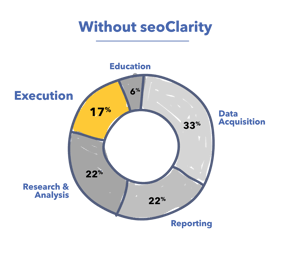
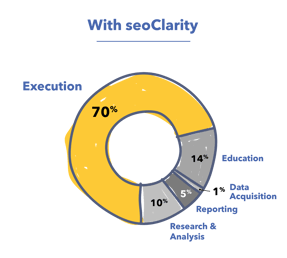
Benefits of SEO Automation
Automation is a necessity if you want to be able to handle the large datasets of your enterprise site. Google moves so fast, that by the time you implement a fix or update, the data can already tell a different story.
There’s simply too much data to analyze and act on efficiently without automation.
In fact, I heard from 20 enterprise experts that scalability is one of their biggest challenges. There’s simply too much data to analyze and act on efficiently without automation. Yet, automation is often left out of the scalability conversation. That needs to change.
By leveraging automation for SEO execution at scale, you offload time-consuming tasks to technology, allowing you to focus on high-impact strategies that drive growth.
Recommended Reading: How seoClarity Automates Your SEO
Three Types of SEO Automation
There are three main ways to look at automation:
- Data collection and aggregation
- Insights and analysis
- Execution at scale
Each level builds upon the previous one, increasing efficiency and reducing manual effort at every stage of the SEO workflow.
Data Collection
The foundation of SEO automation starts with data collection and aggregation. There’s no need to manually track rankings, run site crawls, or pull reports when technology can handle it for you.
This is the most basic form of automation—and it’s where most SEO teams stop. Many “SEO automation tools” on the market focus solely on automating data collection, but true automation goes far beyond that.
Insights and Analysis
Raw data alone isn’t useful—it needs to be processed and analyzed to drive action. That’s where the next level of automation comes in.
SEO automation acts as a filtering mechanism, turning massive datasets into meaningful insights.

Instead of spending hours manually analyzing spreadsheets, advanced NLP (Natural Language Processing) and ML (Machine Learning) models work behind the scenes to surface the most critical insights and prioritize optimizations.
This also enables automated task management. For example, setting up recurring crawls eliminates the need for manual configuration while ensuring fresh insights into site health.
The same automation applies to monitoring URLs, ranking shifts, and backlinks, alerting you to critical changes that could impact search visibility—so you can act before problems escalate.
Execution at Scale
Once you’ve automated data collection and insights, the next step is the most powerful: automated execution at scale.
This level of automation allows you to:
- Implement site changes in real-time
- Run large-scale SEO testing
- Update internal links dynamically
- Make optimizations without relying on developers or CMS limitations
This isn't a system that just makes changes without your oversight. Think of it as a workflow automation engine—if a specific condition is met, the system executes the appropriate action. Or, you can review and apply bulk changes across multiple URLs with a single click.
Intrigued? Get more details down below.
10 SEO Tasks You Can Automate
Powerful SEO technology allows you to integrate automation into multiple areas of your organic search processes. More importantly, it allows you to solve the time-constraint problems most SEO teams are plagued with.
1. Generate and Locate Insights
Enterprise SEOs have access to so much data that you probably don’t even know where to start.
The insights that will lead to rank improvements, a better user experience, traffic, and conversions are in there somewhere, but how do you isolate them?
This is something we’ve seen far too often with our enterprise clients. It’s also why we built Actionable Insights — your SEO Analyst that works 24/7, beyond human capabilities.
Recommended Reading: Next Generation Actionable Insights: AI Analysis in SEO
It automatically monitors and analyses your site data to reveal over 120 validated and verified insights you can act on now.
2. Monitor Critical Page Changes
Many people and teams touch your website — developers, UX teams, digital marketing teams, and of course, your team — which can lead to fatal errors that damage your rankings.
For a site with thousands or millions of pages, it’s impossible to know what exactly changed on your site!
Recommended Reading: Monitor Site Changes (and Protect Your SEO) with a Change Monitoring System
With the power of automation in Content Guard, get alerted when specific site elements change, so you’ll no longer be in the dark about what changed, when it changed, and what it was like before the change.
3. Confirm that Google Picked Up on Site Changes
When you make a dynamic update to your content site-wide, it’s important to verify that the change was noticed by Google.
Otherwise, you may cross a task off your to-do list when Google has no idea of the change that was made and doesn’t present it to users.
Manually browsing each page to ensure the changes took effect is no viable solution, so again we turn to automation — this time, SEO alerts.
4. Create Authoritative Content on a Topic
We all know that content has to be authoritative to rank, among other things.
But understanding a subject matter well enough to create quality content that performs within the search engines and tracks your target audience, all at scale, with natural human limitations … that's a big content marketing challenge.
This is why content marketers turn to content optimization and analysis tools to create content faster than ever before.
Our AI-driven content analysis tool Content Fusion automatically analyzes the top ranking content to understand and present to you how to create the most authoritative content.
Recommended Reading: Is It Possible for an SEO Platform to Provide Full Content Automation?
With a few clicks, you’ll uncover the topic areas you need to include in your content, the context behind those topics, and ideal content lengths and metadata, effectively cutting your research time down to a few minutes instead of hours.
Plus, internal link recommendations make it easy to strengthen your topic clusters while offering a relevant path to your end users.
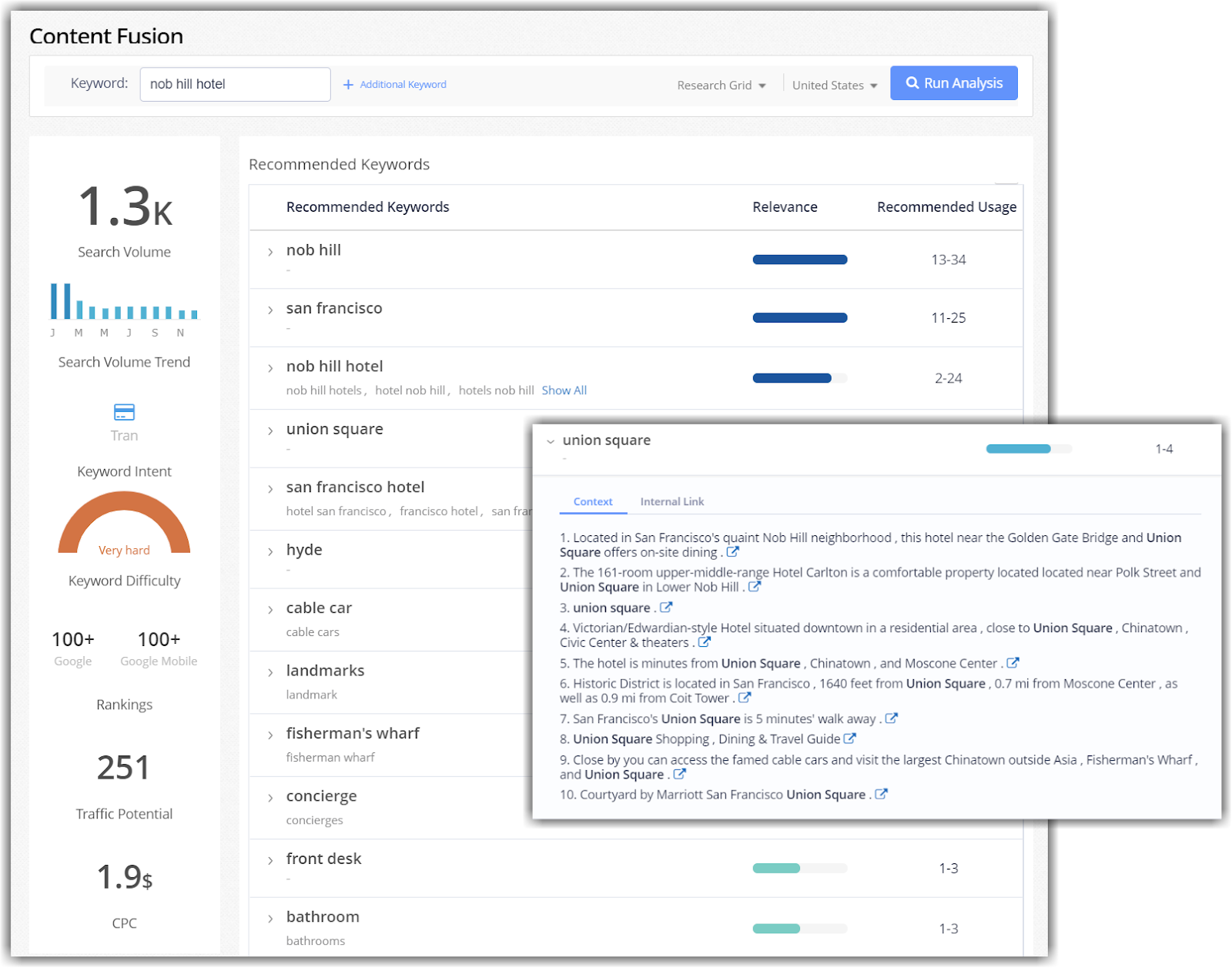
To overcome writer's block and speed up the writing process, Content Fusion even generates detailed outlines, drafts blogs, and facilitates content rewrites thanks to Sia, our ChatGPT-powered SEO assistant.
Unlike other content generation solutions powered by AI, the outputs that Content Fusion produces are always optimized for SEO and tailored to your unique data, competitive situation, and content specifications. Plus, you don't have to worry about leaking confidential information as your Content Fusion inputs never leave our servers.
Learn more about our commitment to secure and ethical generative AI innovations in our AI Manifesto.
5. Automated Content Briefs
The SEO content creation process is dense. So much goes into planning a strong content asset. From keyword research to gathering questions to answer and crafting the perfect meta description.
Not to mention, handing over this key information to your content writers and expecting them to follow through on your expectations.
With Content Fusion’s ability to auto-generate content briefs, you automate your research and planning process tenfold.
All you have to do is enter your target keyword and let the technology do the rest for you.
6. Monitor the Competition
It’s challenging enough to monitor your own site changes and rank positions, but then you also have to factor in the competition.
Your competitors can offer you invaluable insights for your SEO strategy, so this is not something to let slip by the wayside.
Competitor alert changes in seoClarity tell you when competitor site elements change or the competitor begins to outrank you in the SERPs.
7. Performance Reports
Crafting reports and sending them to the appropriate team members or stakeholders takes time, but it’s essential.
You need to constantly prove that the organic search channel is yielding results.
Automated dashboard reports that are automatically sent through email help you manage this task so you no longer need to compile, organize, and send reports from scratch.
8. Ongoing Technical Site Health Insights
Maintaining a positive site experience for your end user is a core component of successful SEO.
Your site must be built on a strong foundation with fast page loading, easy navigation, proper and helpful internal links, and plenty more to offer a positive user experience.
Automation lends itself to strong site health by detecting technical SEO issues and assigning them a priority level so you know which ones to resolve first.
In addition, skip the redundant setup process with ad-hoc crawls to gain this data and move to recurring crawls that constantly bring back the freshest look at your site health.
These crawls return invaluable insights so you can continuously optimize for the end user experience.
Find issues like broken links and duplicate content, validate pagination, crawl JavaScript, and even capture Hreflang. With seoClarity, there aren't limitations placed on your site crawls or crawl projects.
9. Speak the Language of Your Customers
Searchers today will type anything and everything into Google search because they know they’ll get results back.
With so many ways to search (paired with human limitations), it’s impossible to understand all the ways your users search.
Topic Explorer’s Intelligent Match finds hidden connections between topics so you can align your content with the way your audience searches.
Maybe your users search for “indestructible chew toys” — or maybe they search for “chew-resistant dogs toys,” “unbreakable dog toy,” or “unchewable dog toy.”
Intelligent Match uncovers and connects all of these queries so you can create the most authoritative content for your topic cluster.
It’s not enough to understand what users search for, you need to know the intent behind the search, too (and create your content accordingly).
Content has to be relevant in order to be of value to searchers.
You could scour the SERPs to get a clue of a query’s underlying intent, and compare it against other queries, but working keyword-to-keyword is a thing of the past.
After you’ve applied Intelligent Match to uncover the ways your audience searches, use our Audience Similarity metric to find the level of similarity between the topics’ underlying intent.
This way, you’ll know which topics to cover with a single piece of content, and which deserve their own page.
These are insights that would be impossible for a human to do manually.
10. Make Real-Time Changes to Your Site
SEOs often know what problems exist and what needs to be changed (if you don’t, automation is always there to pull insights!).
Then comes the real challenge for enterprises: actually making the changes in a timely fashion that gets prioritized.
We all know the hardest part of enterprise SEO is getting things done.
Internal IT challenges, infrastructure issues, and a lack of resources all make it difficult to implement SEO changes — even though you know it will have a positive effect.
Instead of manually adding and modifying site elements like title tags, meta descriptions, internal links, canonical tags, structured data (and plenty more) on a page-by-page cadence, you can now use automation to immediately update these components all directly from seoClarity with ClarityAutomate.
Since you're operating outside of your content management system, you're able to update elements on your site even if your CMS has limitations.
A simple edit or addition made with the technology creates real-time changes on your live site.
No more chasing down content writers, developers, and production teams for weeks to fulfill a project that will now take minutes.
Execute even more tedious and time-consuming tasks in bulk at the touch of a button with Sia.
Simply select a preset task such as generating page titles and meta descriptions, dynamically segmenting keywords, and translating keywords. Then set the parameters and click "Try" to review the results before selecting "Execute" to carry out the task at scale. It's that easy.
Conclusion
Automation makes you the “CEO of your SEO.”
Think about it. You get the necessary data and insights to accelerate your SEO processes without getting your hands dirty. There are still human decisions to be made, but with automation, you can make those faster and better.
It’s time to start thinking of SEO automation as something more than the minimum expectation.
Enterprise SEOs need technology capable of scale, efficiency, and accuracy, so they can prioritize their time and focus on what matters.





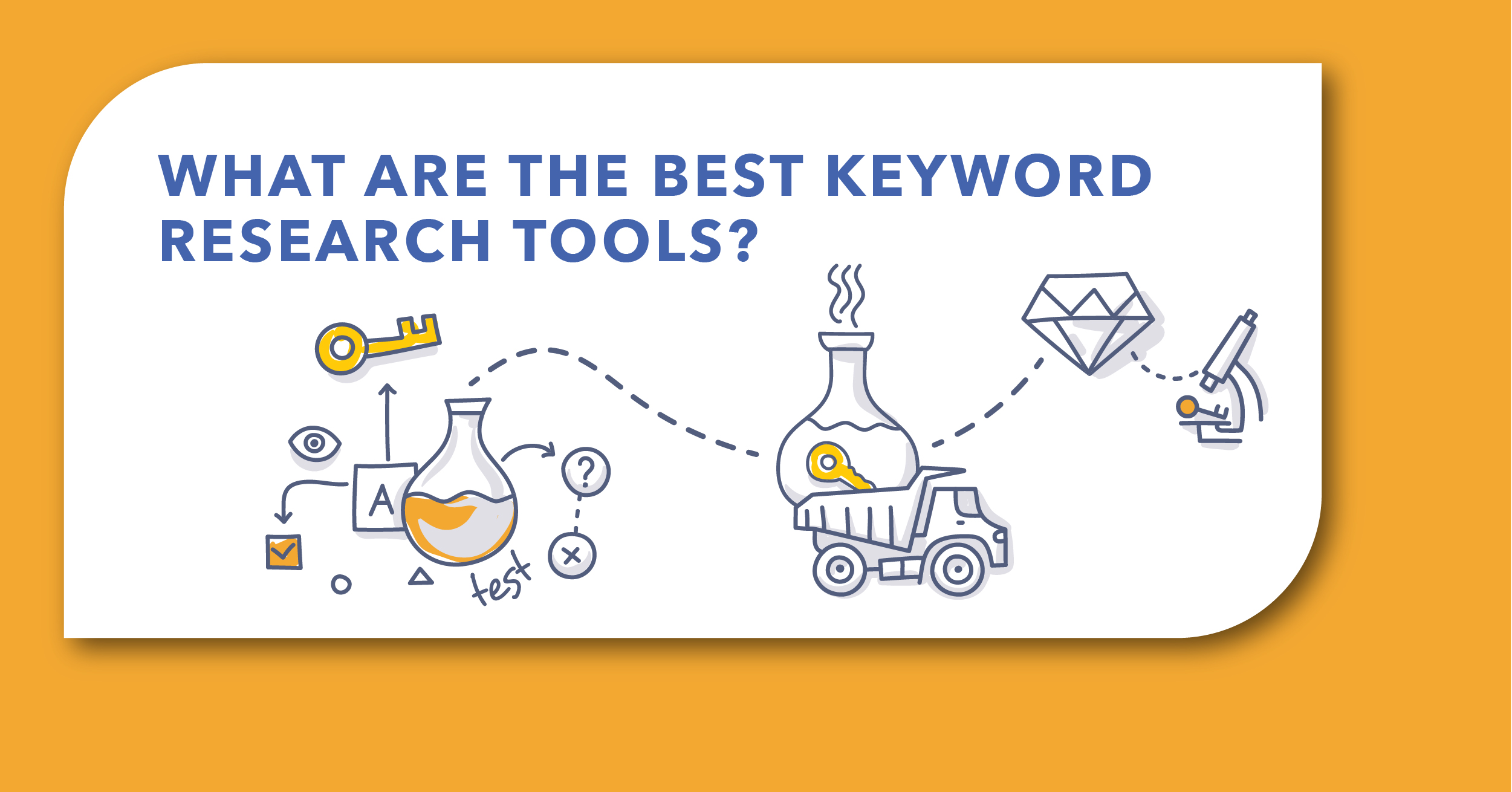
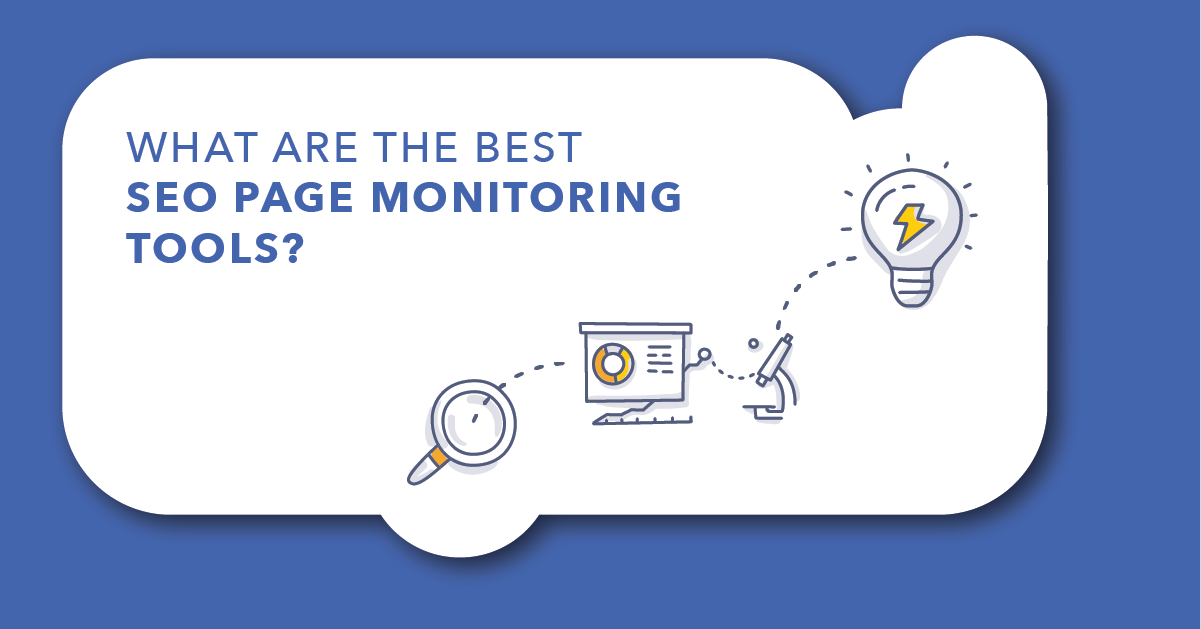

1 Comment
Click here to read/write comments